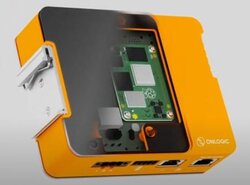Open Hardware and Devices With Linux
-
The UV Budgie shows IoT alerts in a fun way | Arduino Blog
The Internet of Things (IoT) is now well-established and households around the world contain many IoT devices. Most of them were designed to blend as seamlessly as possible into their owners’ lives, which means that they tend to be unobtrusive. But “unobtrusive” is the last adjective you want to describe an important notification, which is why Jude Pullen built the UV Budgie.
For those of you without an interest in ornithology, “budgie” is a shortening of “budgerigar” and is a nickname for the common parakeet. That name is appropriate for this device as it features an automata budgie that flaps and squawks according to the peak UV level for the day. UV rays can be dangerous, so this flapping budgie is a great way to get your kids attention and remind them to pack some sunscreen. A ding or announcement from Alexa won’t tear their eyes away from Minecraft, but a fluttering avian might.
-
Industrial IoT gateway based on Raspberry Pi CM4 supports Ignition Edge
OnLogic’s IGN800 is a fanless industrial-grade Edge Gateway powered by the Raspberry Pi CM4 and pre-loaded with Ignition Edge software. The device can be customized with up to 8GB of RAM, 32GB of eMMC storage, 2TB of SATA SSD and dual GbE LAN ports.
The IGN800 accommodates the Raspberry Pi CM4 which features the Quad-Core ARM Cortex-A72 64-bit SoC. The memory system can be equipped with 4GB/8GB of RAM and a M.2 2280 B-key for SATA 3.0 storage. The specs mentions that the IGN800 can be configured with up to 32GB of eMMC but it seems that model is out of stock for now.�
-
ESP32 Adds Bluetooth To An IPod Nano
The iPod Nano was one of Apple’s masterworks, but it’s really tied down by its dependence on wired headphones. At least, that’s what [Tucker Osman] must have thought, as he spent an unreasonable amount of time designing a Bluetooth mod for the 3rd gen Nano. And it’s a thing of beauty — temperamental, brutally difficult to build, and fragile in use, but still beautiful. And while some purists try to keep their signal analog, [Tucker]’s coup d’etat is to intercept the iPod’s audio signal before the DAC chip, keeping the entire signal path digital to the Bluetooth speaker. Oh, and he also managed to make the volume and track skip buttons work, back across the wireless void.

